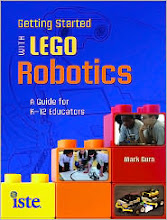"2 Taiwanese Teenagers Win World Robot Olympiad in India
W DELHI (AP) — Whizzing around a green felt table chasing a soccer ball beaming infrared light, the boxy robot shoots—and scores—and wins its Taiwanese teenage creators first prize at this year's student robot games.
The two
breadbox-sized scooters, playing goalie and kicker, from the team called
"Wings of Storm" were up against another Taiwanese team's robots in the
"Football" category of the World Robot Olympiad held over the weekend
in the Indian capital of New Delhi.
"We
have been practicing since primary school," said Liaw Jia-wun, 15,
thrilled to have won with his teammate. "We never in our lives could
think that we would win the world championship."
Other
categories at the robotics championships—attended by more than 450
teams from 50 countries—asked participants to create robotics solutions
to reduce or recycle waste, leading teams to build robots that emptied
trash bins or scooped up building debris for future use.
Some participants were as young as 6 years old, while others were approaching university graduation.
In
the more advanced robotics category, robots had to be preprogrammed for
the automated challenge of picking up mini bowling balls and knocking
down pins. That meant the robots had to sense where the target was and
hit it without any intervention from their creators.
The
idea is to teach students computer programming as robotics moves beyond
factory applications to everyday functions, said engineer Dominic
Bruneau, the head coach for the Canadian teams.
"More
and more, we will be interacting with robots" in our daily lives,
Bruneau said. The student engineers are not just working on theory but
are "doing practical work of building real stuff and trying to solve
problems."
South African teacher and coach Nicky Du Plessis said the games helped kids develop key skills.
"We
start with the fundamentals. We believe that if kids can start from a
very young age ... it teaches them how to build," she said. "Then it
teaches them logical thinking. How to change something quickly."
Read the full article at its source:





